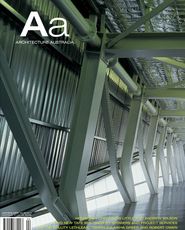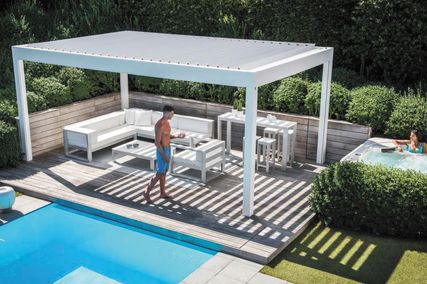ONE OF THE MOST common complaints about architectural magazines is that buildings are always published just-finished in all their gleaming newness – pictured before clients have had time to mess them up, before landscape has grown or life has intervened in the architect’s vision of what the building should be. And now Photoshop makes it even easier to “finish” buildings virtually, enhancing the idea of the buildings and further idealizing them by removing supposedly unsightly reminders of the “real world” – power poles, drain covers, even neighbouring buildings, all can be spirited away. Buildings are also often pictured without people, cars or other “stuff”, reinforcing the sense of an ideal, outside time and beyond the messiness of daily life. This phenomenon of the always-new is not simply a construct of the world of publication or architectural photography, it is an effect of the way buildings are commonly understood in architectural culture. Readers, editors, photographers and architects all know that buildings have a life before and after final completion, but it is not easy to shift the paradigm, and although some buildings consciously engage with the architectural opportunities that inhabitation and wear-and-tear present, post-occupancy evaluation has mostly gone out of fashion. However, architecture is not a monolithic thing and there are various ways of engaging with time and its effects on the built environment and the practice of architecture.
In this context I am pleased to introduce a new, occasional component of Architecture Australia. “Radar Revisited” will return to significant Australian buildings, to see how they are faring as buildings, how they have been occupied, what patina has developed and what “barnacles” added. The first building to be revisited is the Australian Embassy in Beijing, by Denton Corker Marshall. Recipient of the International Award in the 1992 RAIA National Awards, the project was also one of the first built by Australian architects in China. As such it is of particular contemporary interest. Beijing-based writer Daniel Elsea finds the building in good heart, robustly accommodating the daily life of the embassy, photographed “now” in snapshot format by Ben McMillan. John Gollings has enhanced the cool abstraction of his stunning “then” photographs by recasting them in black and white – another take on the visual language of that particular moment. Subsequent issues will relook at a range of buildings, all of which excited interest and critical admiration at the time of their completion.
Presenting a building as an object at an idealized moment of completion also tends to elide the processes of designing and making a project, and its relation to other works. Such issues are discussed by reviewers on occasion, but space limitations mean that reviews and associated images and drawings generally focus on works as built. The September/October issue of Architecture Australiaintroduces another new section, which partly addresses this. It will include the first in a series of profiles which will consider the oeuvres of a range of different practices in both conceptual and pragmatic terms. These will look at how various practices operate to enable the production of strong bodies of work. This necessarily introduces questions of process, the evolution of particular themes and ideas across a body of work, and the wider effects, intended and otherwise, of individual projects over time. In some cases it will also be an opportunity to consider the role that unbuilt projects play in the development of practices.
Like most professionally oriented architectural publications Architecture Australiawill continue to review significant projects at the time of their completion. However, by introducing other frames, we might also extend the ways we interpret and present buildings, enabling a consideration of projects across time.
JUSTINE CLARK















